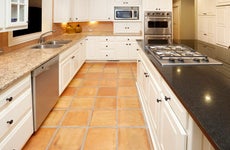What are the different types of ceilings, and what do they cost?
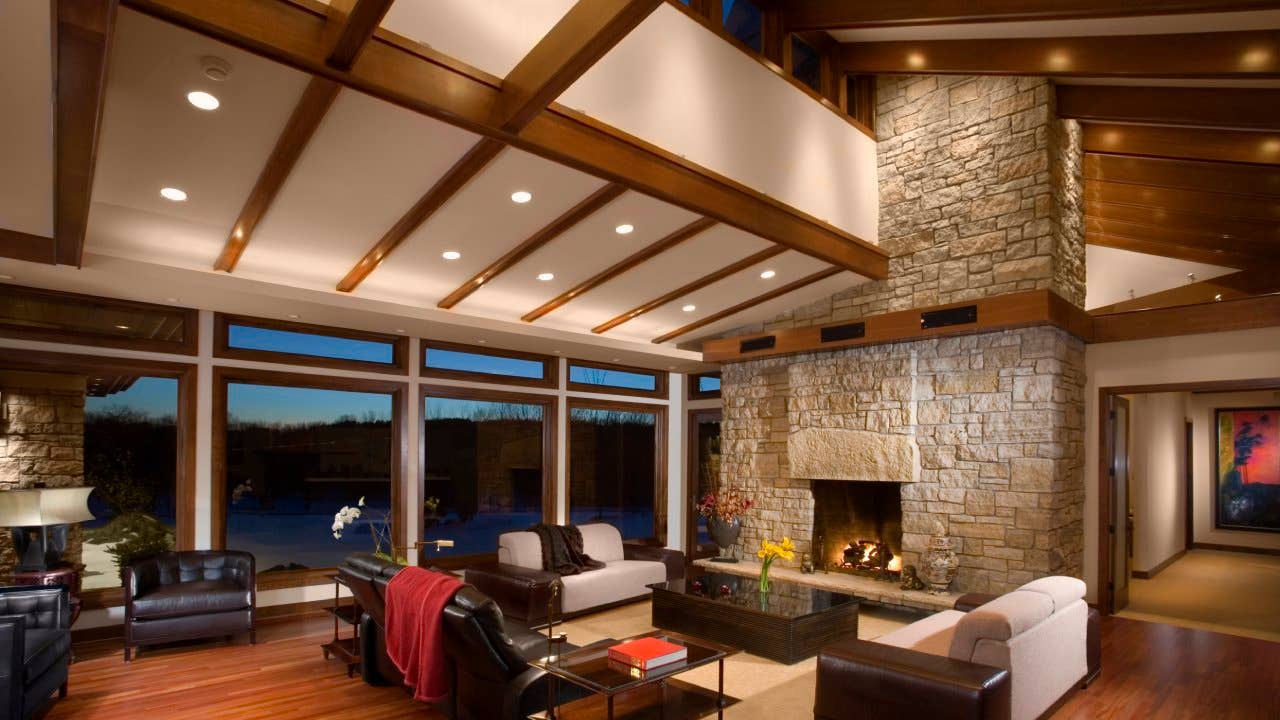
The Bankrate promise
At Bankrate we strive to help you make smarter financial decisions. While we adhere to strict , this post may contain references to products from our partners. Here's an explanation for .
Ceilings are often a forgotten design element. Sure, you can always go with the basic flat rectangle, but what if there’s a design that better aligns with the aesthetic you desire for your dream home? And not just if you’re building a house from scratch or gut-renovating an old one. Even with an existing home, you don’t have to be stuck with the ceilings you have.
Whether a new build or a remodel, the average cost of installing or replacing a ceiling is $1,762, according to HomeAdvisor, though the price can soar to $4,500-$5,000, depending on the design and materials you pick. The estimates are for a 150-square-foot ceiling, the most typical size, but prices can go into the five figures, if you’ve a larger area.
Let’s explore what the types of ceilings are, and how to figure their cost.
Types of ceilings
Various ceiling options exist for residential spaces. Here are the most common categories.
Conventional Ceiling
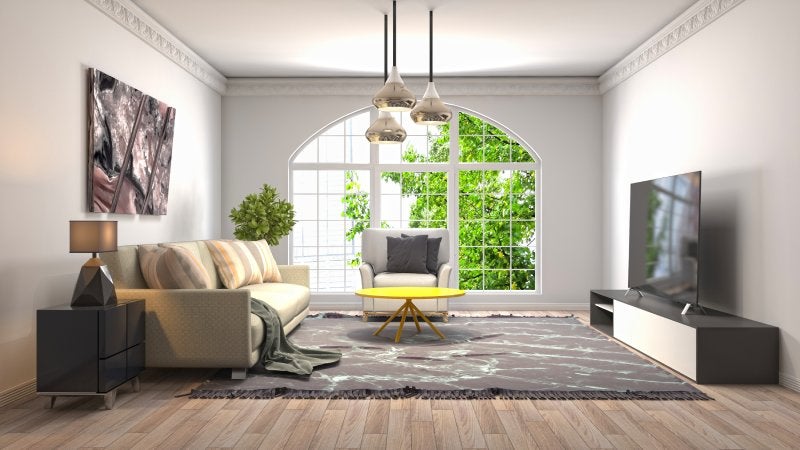
Conventional ceilings are the style most homeowners think of. They feature a flat, plain seamless surface made of wood or drywall, making them ideal for any room in the house.
Beamed Ceiling
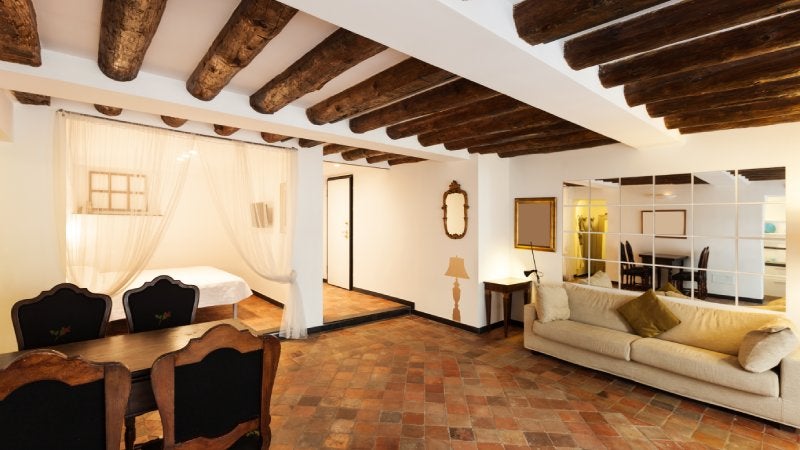
Imparting a rustic look, beamed ceilings feature prominent wooden planks — either the house’s actual support beams, or decorative ones installed over them. Many homeowners opt to install this type of ceiling in their living or dining room.
Cathedral/Vaulted Ceiling
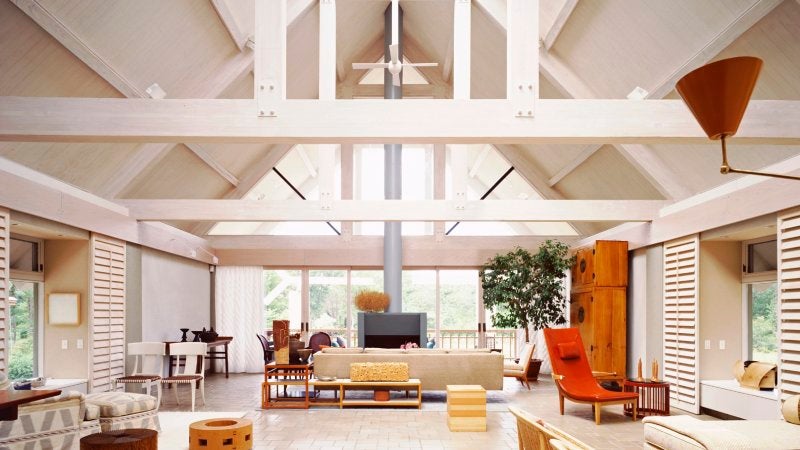
Cathedral ceilings, also known as vaulted ceilings, feature an inverted V, which has a high point at the top and slopes down. Often there are central arch beams in the middle. This dramatic style — one of the priciest to install — is usually found in the living room, bedroom or dining room.
Coffered Ceiling
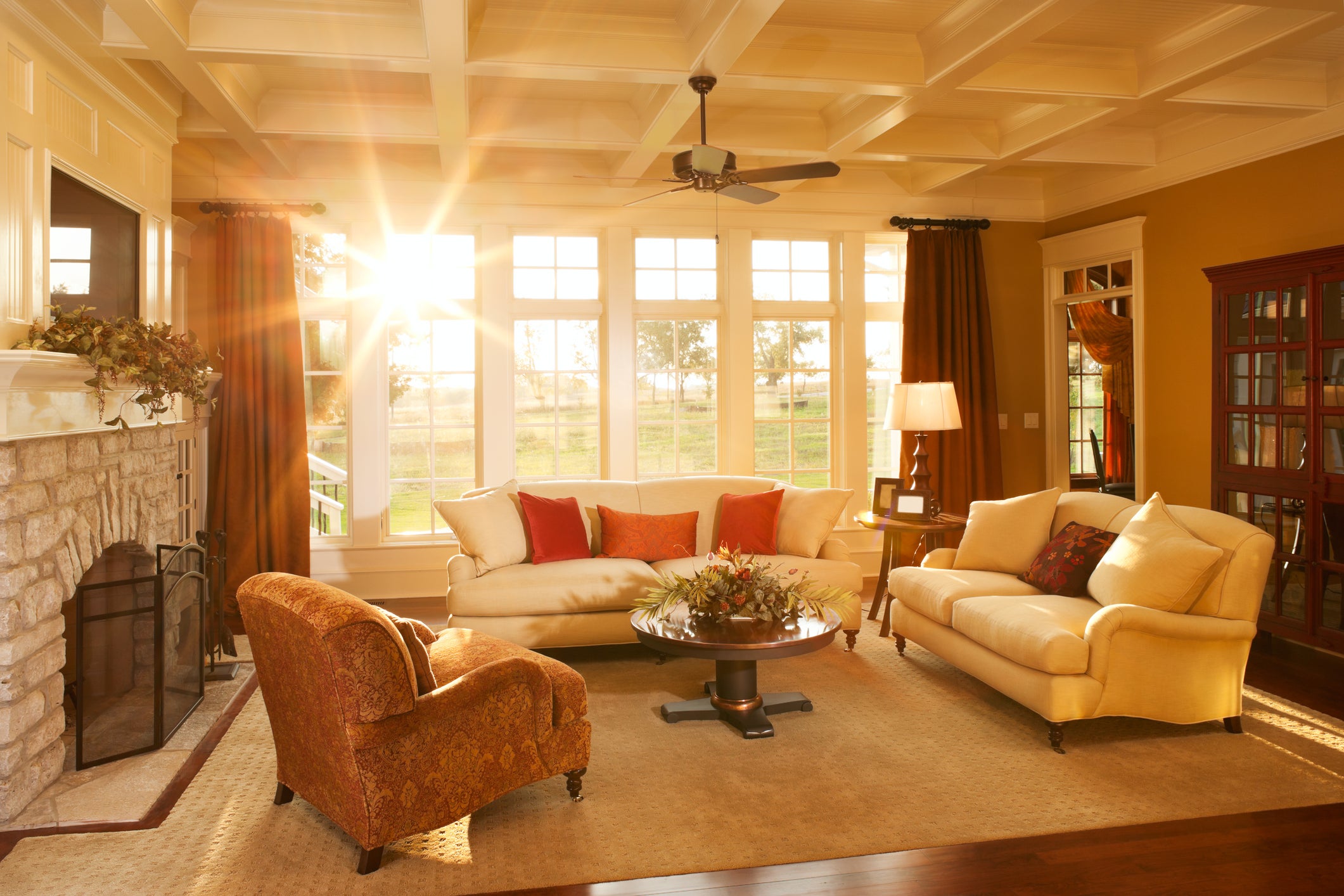
Coffered ceilings feature a combination of beams and inverted panels that cross each other, forming a multi-dimensional, checkerboard effect. Good for dining rooms and libraries, they require expert carpentry and installation specialists.
Tray Ceiling
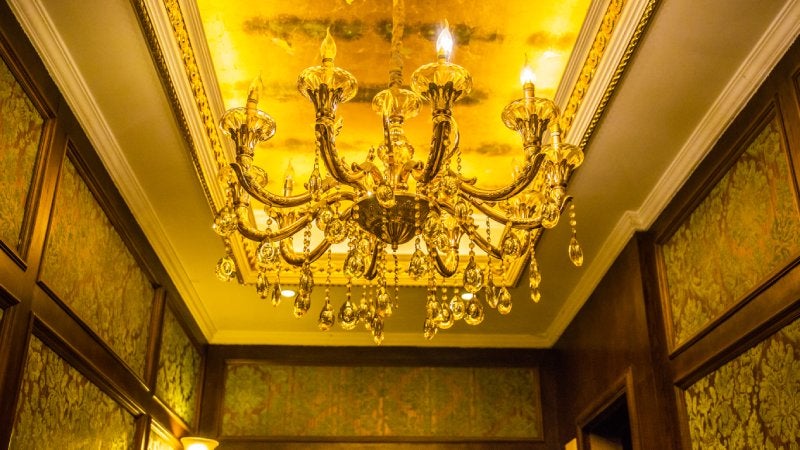
Offering another multidimensional effect, a tray ceiling features a high recessed area at the center, making it resemble a tray. These are often seen in various rooms, including the living room and dining room.
Coved Ceiling
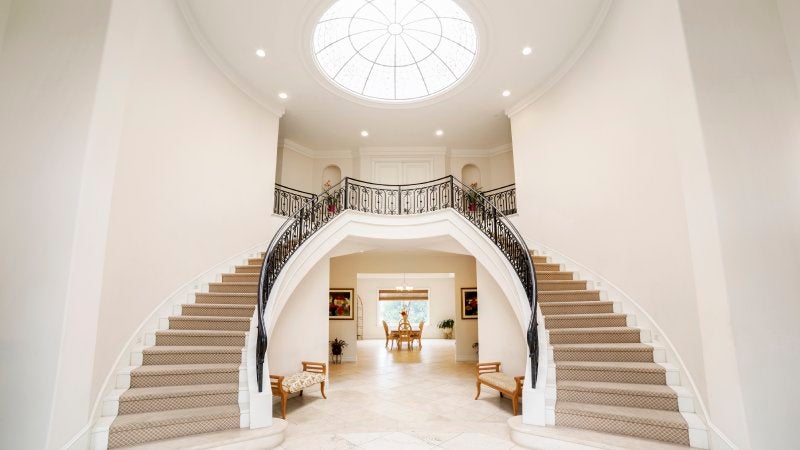
Coved ceilings feature a dome design, which includes curved, rounded edges that gently arch at the top. This type of ceiling is fitting for living rooms or large foyers.
Shed/Slope Ceiling
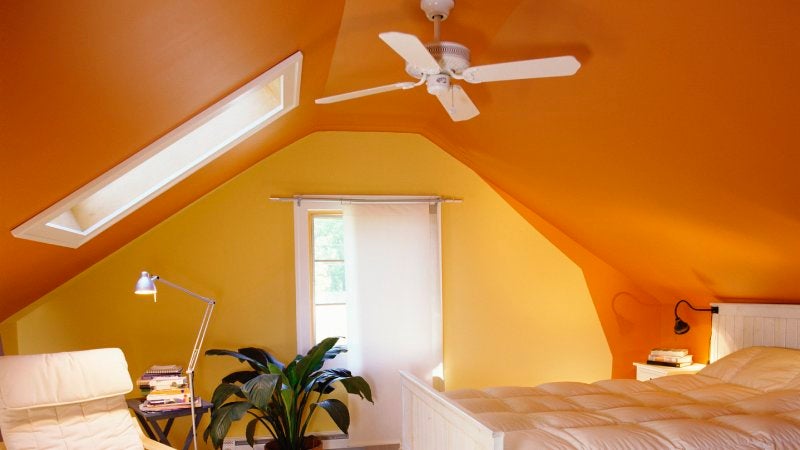
Shed ceilings, often seen in attics or top-floor rooms, feature a high point that starts at one wall and slopes down towards the opposite wall — following the roofline of the house.
Tongue and Groove Ceiling
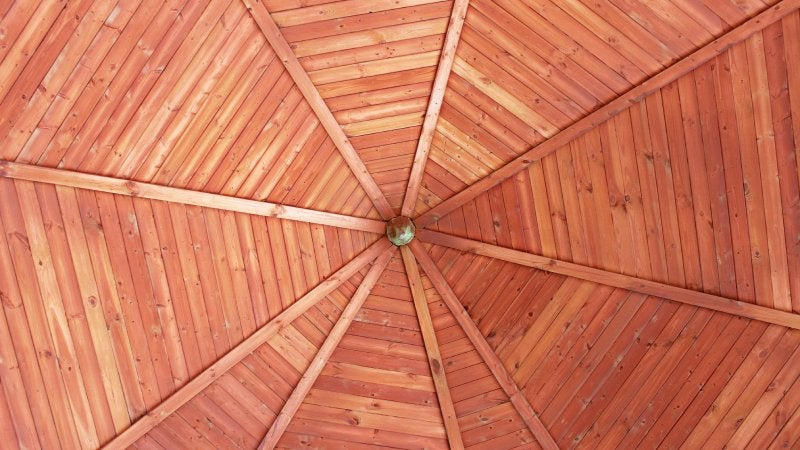
A tongue and groove ceiling features wood planks that are interlocked. The style works for any room, including bedrooms, and can be slanted, rounded or flat.
Drop/Suspended Ceiling
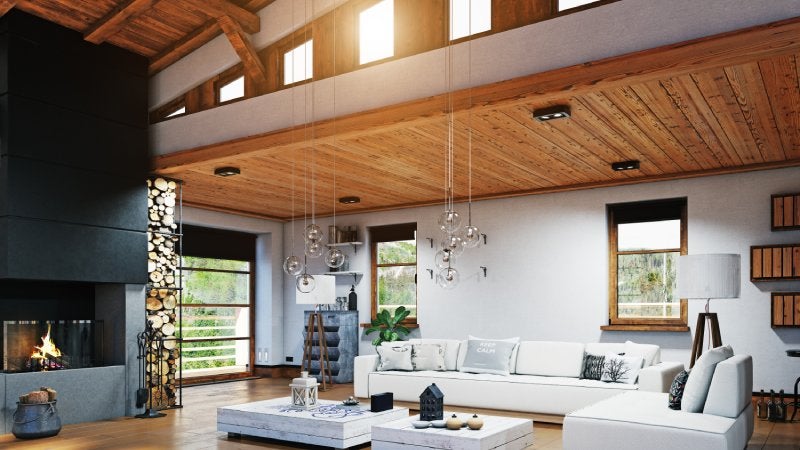
Drop ceilings, also known as suspended ceilings, are ideal for basements because they feature low panels or tiles that hide ducts, wiring and pipes. They can also be used to designate a special area of a single large space, like a dining alcove.
Stretch Ceiling
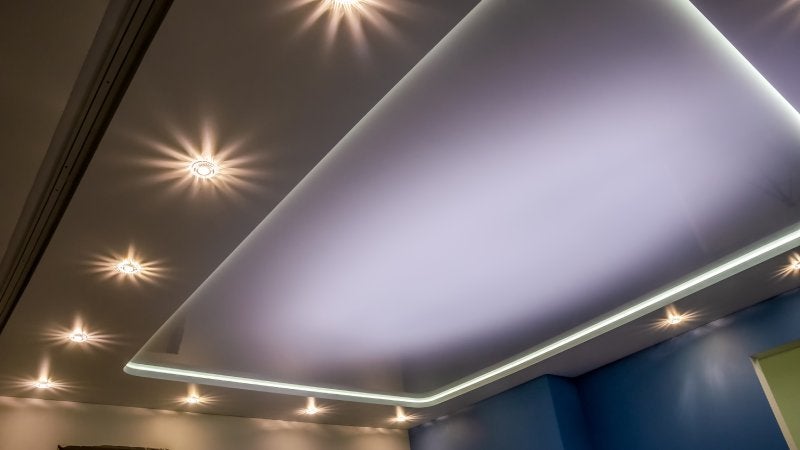
Stretch ceilings feature a perimeter track and a fabric that is stretched and clipped into the track. This type of ceiling can often be seen in dining rooms or kids’ bedrooms. They can be a good quick fix for covering popcorn ceilings.
Zip-Up Ceiling
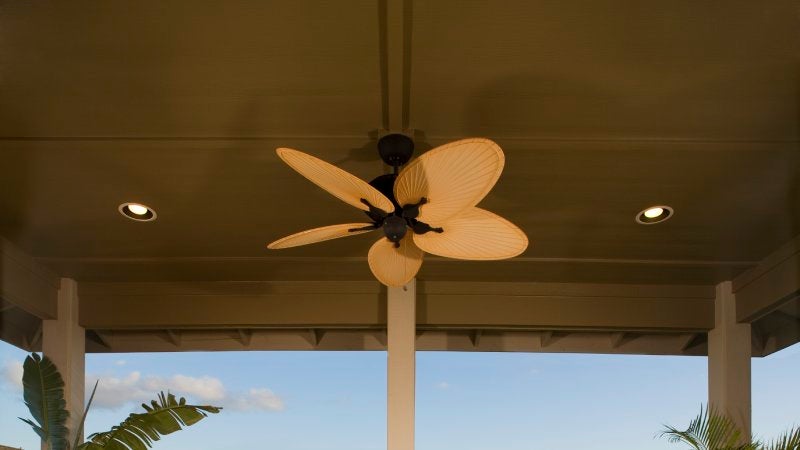
Zip-up ceilings are ideal for outdoor living spaces because they are made with a water-proof fabric that will keep the space clean and dry.
What influences ceiling costs?
Though the average ceiling costs less than $2,000, the tab can easily soar to more than $25,000. Generally, replacing a ceiling costs more than installing a new one, because of the demolition and carting away of debris; figure on an extra $1 per square foot for that.
The major cost factors include:
- Style: The type of ceiling is the single most important factor when it comes to overall cost, as it impacts the amount of labor required, as well as the type of materials.
- Size: Since ceilings are often priced per square foot, size does matter. The expanse affects how long it’ll take to install, and of course the quantity of materials needed.
- Dropping/raising: Whether you drop or raise a ceiling, you’ll be changing its height. Raising a ceiling is more expensive, costing about $9,000, according to HomeAdvisor.
- Materials: The sort of wood, drywall or other material you use plays a big role in the price. For example, a drywall ceiling may cost no more than $3 a square foot, while an exotic wood like Zebrawood may cost as much as $20 a square foot.
- Labor: Depending on the type of ceiling, you might need a specialist in carpentry. Additionally, subcontractors may be needed, especially if you’re raising or elevating the ceiling: electricians if it’ll affect the wiring; plumbers, should pipes need to be moved.
Cosmetic ceiling fixes
Installing a new ceiling isn’t ideal for everyone, especially if you’re renovating a current space. Rather than deal with expensive, inconvenient architectural changes, you can simply opt for a quick, cosmetic ceiling fix that still allows you to achieve your dream design for a budget-friendly price. Many can even be DIY projects.
Beams and Panels
Installing faux beams that section off the ceiling gives a sense of depth, but it doesn’t require any major changes. The beams are not actually structural or even solid — they’re simple boxes installed to create an effect.
Tin tiles
Tin tiles, which can be adhered to the ceiling, are light-weight tiles used to give the ceiling interest and a shiny, metallic look.
Drapes
No, they’re not just for windows. Covering your current ceiling with fabric has a softening effect and can be quite stylish in bedrooms.
Wallpaper
Just as effective on ceilings as it is on walls, wallpaper comes in a variety of patterns and colors — ideal for covering an ugly or damaged ceiling.
The bottom line on types of ceilings and their costs
Ceilings deserve just as much attention as the walls and flooring when building or remodeling your dream home. They can dramatically alter the look and feel of rooms, and often cost less than other sorts of renovations.
Though paying for a new ceiling can be costly, you may not want to completely close yourself off to the idea until you’ve explored all of your ceiling options and their potential costs. Ceilings can be complex, often requiring skilled services, so don’t be afraid to spring for a contractor who can safely and properly install them.
Related Articles

